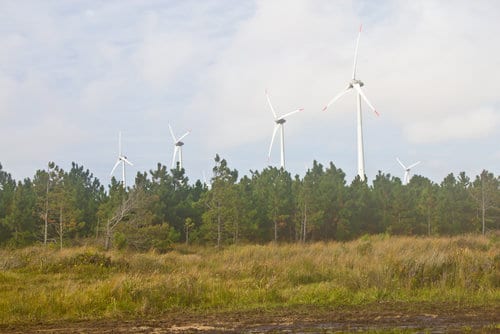
Just two days before the start of the New Year, Brazil’s Mines and Energy Ministry approved a 10-year energy expansion plan, which projects investment of approximately 1.4 trillion reais ($350.6bn) in the sector by 2024. The plan forecasts a marked expansion in both wind and solar power capacity, which are expected to increase to as much as 11.6% and 3.7% of the energy mix, respectively, offsetting decreased hydropower capacity. Wind energy currently represents 3.7% while solar power accounts for just 0.02% of Brazil’s electricity matrix.
China stepped up the fight against pollution as the year began, pledging to raise wind and solar capacity by 21% in 2016. The nation also announced plans to source 20% of its energy from clean sources by the end of this year and to suspend the approval of new coal mines over the next three years. The announcement follows a series of red alerts issued earlier this month as pollution levels peaked in Beijing. Just this week, authorities issued yet another warning advising children and the elderly to stay indoors after concentrations of PM2.5 particles, considered the most hazardous to health, reached 320 micrograms per cubic meter. Though seemingly ambitious, the country’s wind energy plans could help China reduce emissions and achieve its renewable energy objectives. In a research note, Bloomberg New Energy Finance projects rapid growth in wind energy between 2017-20. The report, however, highlights constraints such as the limited market for foreign developers — a constraint that may explain China’s slow wind development so far as domestic developers lack the requisite experience.
Meanwhile, Tanzania is pioneering a revolutionary system of regulating and spurring off-grid power technology that may well facilitate the move away from the traditional electric utility. The East African nation has also introduced key policy framework measures to bolster the nation’s renewable energy initiative. Off-grid systems not only offer a clean alternative to the national grid by providing access to independent, renewable power sources but can also help to significantly reduce energy poverty.
In Europe, Chancellor Angela Merkel’s push for more renewable energy in Germany is forcing conventional utility companies to scale back power projects. RWE will never start its EUR 1bn ($1.1bn) Westfalen-D plant, and EON applied to close two unprofitable gas-fired units as electricity prices fell to their lowest in almost a decade.
“Conventional power plants may be threatened with extinction,” said Thomas Deser, a fund manager at Union Investment, which holds stakes in both RWE and EON. His comments come after RWE’s market value was halved last year.
Once an incredibly profitable industry and a key driver of economic growth in Europe’s largest economy, traditional utility companies are being forced to scale back operations and remodel to keep up with changes. Germany plans to increase the nation’s share of renewables in power production to 45% in ten years’ time, up from its current share at 30%.
Also, in Germany, the Volkswagen saga continued as the car manufacturer was hit with its first lawsuit by the U.S. justice department after last year the company was found to have rigged emissions tests. Volkswagen has so far set aside EUR 6.7bn for recalls and is likely to face further lawsuits which could cost the company billions.
In industry trends, tidal stream energy appeared to be gaining momentum in the last few months of 2015 in contrast to wave. According to a Bloomberg New Energy Finance note, the number of tidal energy companies grew while wave contracted. Tidal company Atlantis Resources, for example, announced that it had secured EUR 16.8m of European Union funding for its MeyGen project. Similarly, Ocean Renewable Power announced a $2.3m US federal grant for its project. Conversely, the wave sector encountered uncertainty in the latter part of 2015 after a series of scale-backs and bankruptcies of eight leading firms in the industry.










